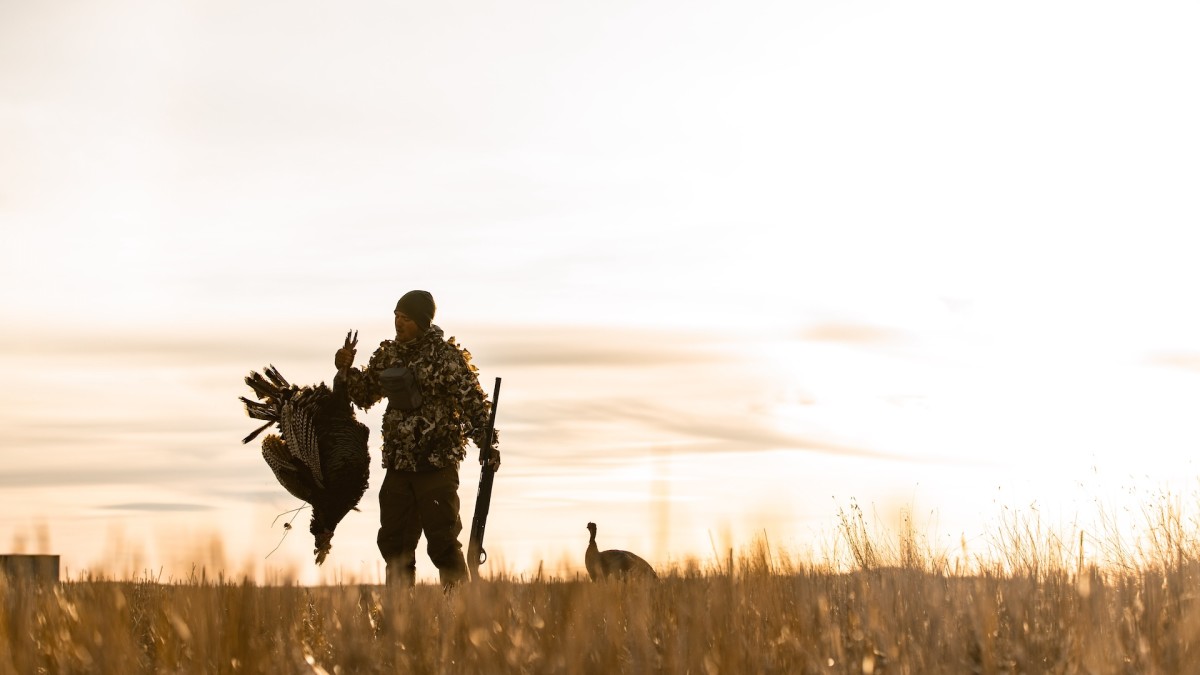
A turkey’s best line of defense is its vision, which makes open-country habitats very advantageous for the wild turkey. As difficult as it can be to beat the eyes of a wary turkey, targeting open-country birds can be a very productive strategy.
If you’re fortunate enough to hunt midwest or western turkeys, where wide-open vistas are the norm, don’t overlook marginal-looking, open-country turkey habitat. These obscure spots tend to receive less public hunting pressure but can host the most robust turkey flocks around.
Identifying Suitable Habitat
Experienced hunters know that not all habitat is created equal. To the untrained eye, all open country looks the same, just as all forests look the same on a surface level. To find the spot-on-the-spot, you simply need to find the area that satisfies the need for food, water, roost trees, and security cover.
Food sources will change throughout the season and are very locationally dependent. Early in the season, turkeys tend to target the very first green chutes of grass found on southern-facing hillsides. In ag land, turkeys could be targeting spilt grain, silage pits, or perhaps spring cover crops. Later in the season, food sources become more abundant and harder to pin down. This is when water and security cover become target areas.
You’ll quickly find that open country birds tend to relate to river and creek bottom riparian areas. Not only is water continually available, but these areas also tend to have the best roost trees, abundant insect forage, and the thickest security cover available for nesting hens and protection from avian predators. When starting your e-scouting, make note of water bodies, even if the vegetation and tree cover look sparse on satellite imagery. You might be surprised how much better the habitat is than it looks from an aerial view.
Cast a Wide Net
The best part about hunting open country birds is that you can cover a large area very efficiently with your eyeballs. Unlike hunting thick timber, no need for locator calls or getting frustrated when the birds become tight-lipped and are nowhere to be found.
Instead, use the open country to your advantage. Find a high point and glass for birds, just as you would a prairie mule deer hunt. If your area has ample roads, don’t feel bad about driving roads and scouting from the truck. Instead, use what the area gives you. Hunting open country birds is all about covering large areas as efficiently as possible. After you’ve located a tom or two, you’ve already solved half the equation.
Spot and Stalk Tactics
For most turkey hunters that I know, bushwhacked turkeys are their jam. Open country is ideal for a spot-and-stalk ambush hunt. Use the terrain to conceal your approach and get ahead of the flock. More often than not, the birds will cover more ground than you anticipated, and you’ll likely find yourself behind the 8 ball. Seasoned turkey hunters know how many times birds will change directions and how quickly they can get gone.
However, hands down, my favorite turkey hunt is an open-country call-in scenario. Knowing these birds’ exact whereabouts and trajectory is as close of a sure thing as you’ll find in the turkey hunting world. Having a visual of the size of the flock and the tom, hen, and jake makeup also helps me quickly decide on a decoy strategy, with quickly being the keyword.
Sometimes, you don’t have much time until your intel is obsolete, and quick decisions are paramount. For example, if I see a large mixed flock of hens, jakes, and toms, I’m probably bringing a male decoy and one hen. Whichever jake decoy I can set up faster usually gets the nod, meaning the strutter sometimes stays in the truck. A lone tom looking for a lone hen, you guessed it, a lone hen will often do the trick. A bachelor group of jakes and or toms tells me that a jake and/or tom decoy combo might be most effective.
On the other hand, certain scenarios are better suited for light and fast with no decoys. If you know time is ticking and there won’t be time to fuss with decoys, the diaphragm call in your bino harness might be all you need.
Get Close
If there’s one secret to capitalizing on open country opportunities, this is it: get as close as possible to the gobbler before making any calls or setting up your decoy. With every 50 yards you successfully close, your odds of success nearly doubles; but so do your odds of bumping him.
A tom that is caught by surprise, whether to your calling or decoy setup, is far more likely to react favorably. Give a tom too much time to think about your setup, and he becomes more likely to lose interest. Conversely, if a faux jake shows up out of nowhere or a receptive hen lands in his lap, the gobbler is far more likely to react out of emotion, putting him right in your lap. Put an open country hunt on your calendar and these tips in mind; you’ll quickly remember how much fun turkey hunting can be.
Feature image via Captured Creative.




